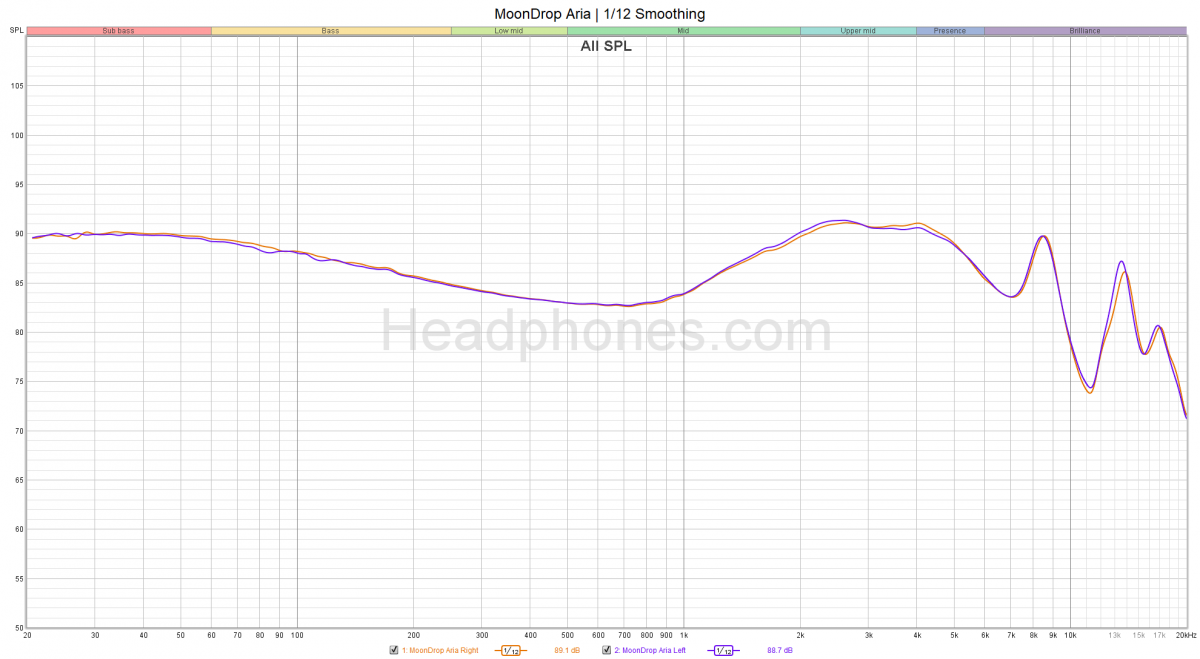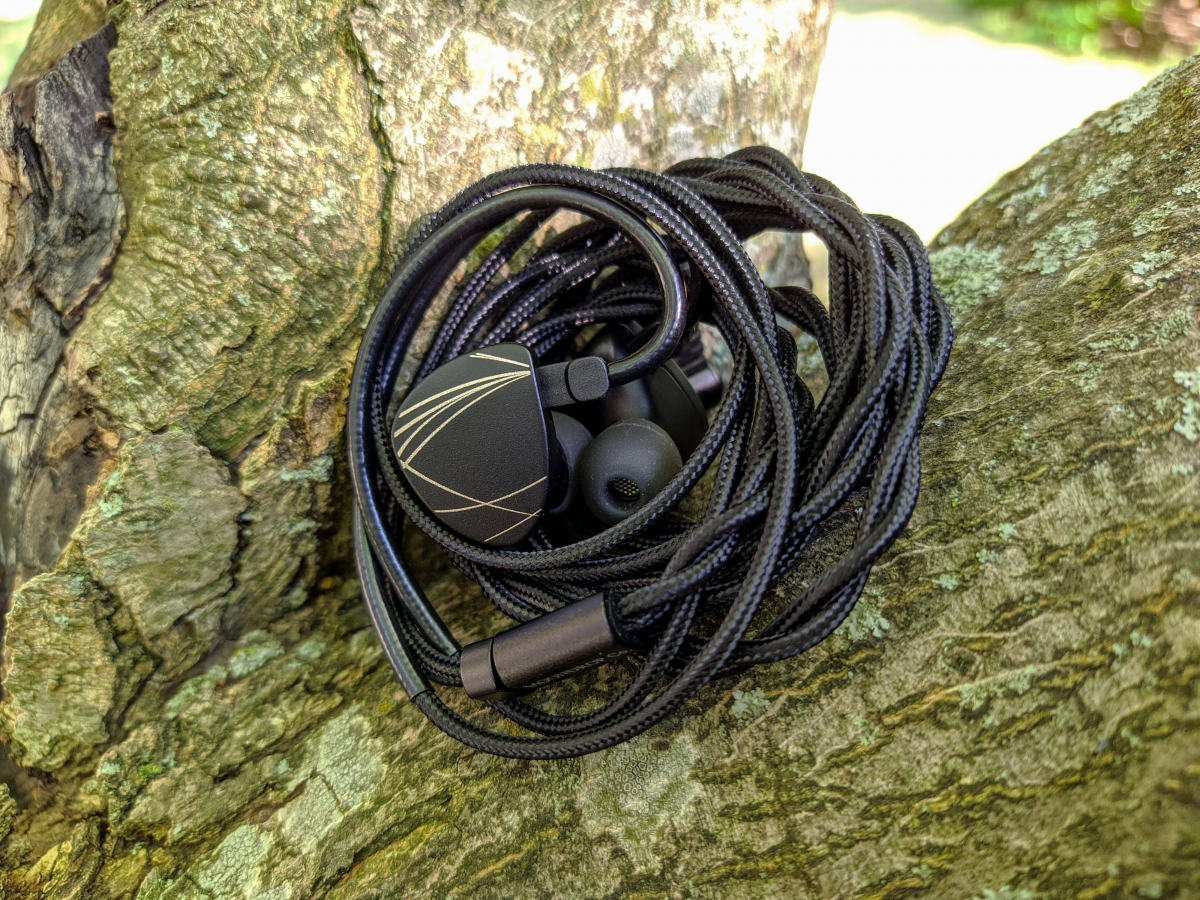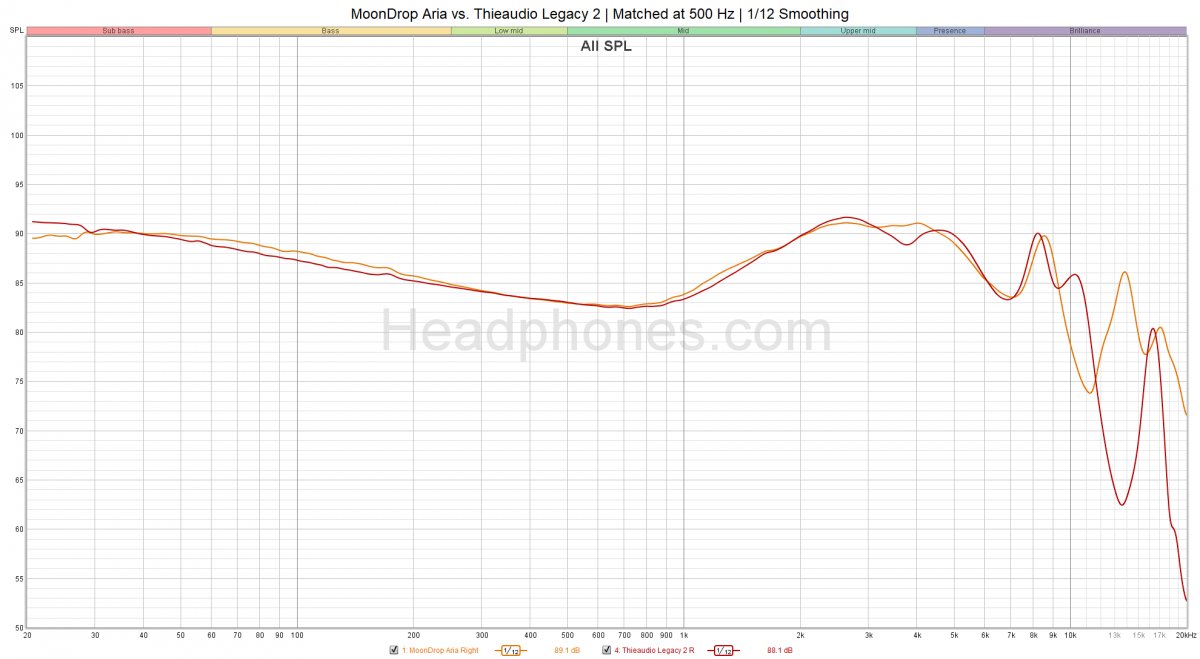MoonDrop Aria (2021) Review: Masterclass in Accessibility

Review written by @Fc-Construct - Review unit on loan from headphones.com
Moondrop Aria - Product Summary
- Reasons to buy
- Phenomenal price/performance ratio
- Great fit
- Great sound
- Ideal beginner IEM
- Reasons not to buy
- Mediocre accessories
- Cables are prone to tangling
- High levels of cable noise
 |
Get the Moondrop Aria for the best available price at Headphones.com. |
Introduction
The budget to mid-fi IEM market has undergone a bit of a revolution over the past 6 years. The dark days were filled with endless variations of questionable ChiFi (e.g. KZ) IEMs that were admittedly occasionally better than the other horribly tuned options in the market. Such was the sad state of the IEM landscape. Though there were a few truly good options such as the VSonic GR07, it wasn’t until after the release of the Tin Audio T2 did we really start to see this stagnant market shift. This phase brought on varied attempts at better tunings beyond the V-shaped KZs of the past. Though few were successful, it paved the way for the next stage of the ChiFI IEM story. Today, the market has now matured with a variety of well tuned IEMs to choose from. While some have criticized the constant release of similarly tuned IEMs as being boring and without innovation, the simple fact is that there has never been a better time to get into the world of personal audio.
This brief history lesson sets the stage for the topic of today’s review: the MoonDrop Aria . Specifically, the 2021 version that replaces the now discontinued 2018 model. Coming in at $80 with a single 10 mm LCP dynamic driver setup, the Aria represents MoonDrop’s attempt to set a new benchmark in the budget space after having effectively conquered the mid-fi market. And as you will see in this review, I daresay that MoonDrop has once again proven their mastery at bringing great sound quality at increasingly accessible prices.
What’s in the Box?
Like MoonDrop’s other products, on the box of the Aria has a Japanese-inspired artwork on it. I can only commend MoonDrop’s founder for his relentless commitment to his artistic tastes despite its divisive nature. In the box is the IEMs sitting on velvet-lined foam and a compartment that holds a circular carrying case. This carrying case is identical to what you’d get with the MoonDrop Starfield and is about the most basic of IEM cases you can get. Inside is the fabric-sleeved braided 2-pin cable and 6 pairs of silicon S, M, L tips. For your own sanity, please replace the cable as soon as you can. These sort of fabric-sleeved cables look nice in theory but are simply the worst in practice. Horrible cable memory, extremely prone to tangles, and distracting levels of cable noise.

The IEM shells themselves are made of solid metal with and feel substantial in hand. The gold/bronze styling is tasteful and unlike the Starfield, it looks like there won’t be any issues with paint chipping. There are two large front vents on the Aria and isolation is fairly middling. The nozzle size is a reasonable 5 mm and has an embedded nozzle filter. Though there isn’t a lip on the nozzle to prevent tips from slipping off, I find that silicon tips grip the metal nozzle tightly and there is no issue with them coming off. The Aria fits well to my ear and seals well though it does feel a little bulky. Overall, though the accessories may be sorely lacking, the Aria’s build quality is superb.

Sound
The Aria has a balanced tuning with a touch of warmth to its mids. Though its tuning is extremely similar to IEMs like the MoonDrop Starfield and the Thieaudio Legacy 2, something about the Aria’s sound presentation appeals greatly to me. It comes off as natural sounding in the bass and mids with a comfortably sized soundstage. Though its resolving ability isn’t standout, I don’t find myself necessarily yearning for improvements here like I would on other budget sets. The Aria provides a cohesive package that works excellently as a whole.

Frequency response of the MoonDrop Aria. Measurement taken with an IEC-711 clone microphone. Comparisons can only be made to other measurements taken by this specific microphone. The peak at about 8-9 kHz is an artifact of the microphone. It likely does not actually exist as depicted here.
Bass
The bass of the Aria extends well into the subbass region. Though there is a loss of physicality at the lowest octaves, the bass of the Aria handles itself competently. It leans towards the boomy side but not overbearingly so. There isn’t a sense that one part of the bass dominates the other and comes off as a rather seamless experience. Compared to some of the hybrids I’ve listened to recently, the bass quality of the Aria is quite good. It doesn’t sound too dry or one-noted. There’s a natural feeling of decay and dynamism. One improvement I would like to see is if the bass notes of the Aria were firmer and slammed harder. As it is, there is pillowy softness at times. Though I wouldn’t call the Aria a basshead IEM, there is plenty of bass volume and never sounds lacking. All in all, I’m satisfied with the bass quality of the Aria. While it isn’t necessarily outstanding, the opposite is also true. You would need actually noteworthy bass to do better than the Aria.
Mids
The mids of the Aria are pleasant to listen to. The upper mids are slightly recessed with a touch of lower mids elevation to give it an overall slightly warm sound. The midbass/lower mids transition isn’t the cleanest but it does sound organic. And so do the rest of the mids. The timbre of the Aria sounds very “right” to me. Vocal tone is excellent. No hint of harshness or sibilance. Energetic instruments such as the electric guitar and snare could use a bit of snappiness and bite but otherwise, I have nothing to complain about the Aria.
Treble
The treble is where it gets interesting on the Aria. Going solely off the graph above, I would predict that hats/cymbals would have a short initial attack and then fade away into the background as a result of the dip happening past the 5 kHz mark. Not so. The Aria does not sound overly dampened like some other IEMs who play it safe do. There’s just enough sharpness in the treble that keeps it from sounding totally dead. If I had to guess, I’d say it’s the presence of an upper treble peak that helps keep the Aria’s treble sounding alive. While I personally would still like to see more lower/mid treble, I can’t deny that the treble dip on the Aria works out nicely. It passes my hats/cymbals test reasonably well while avoiding that pesky metallic tone other single DD IEMs tend to have as a result of a 5.5 kHz treble spike.

Love our in-depth reviews?
We test and review hundreds of headphones every year. Sign up to get the latest news, reviews, guides, and more in your inbox. Join the 60,000+ like-minded audio lovers who love our newsletter!
Presentation
I think what makes the Aria stand out to me is its presentation. Its staging is a step above the other budget sets in terms of soundstage. There’s a nice sense of spaciousness that allows instruments to have plenty of breathing room to play around in. It’s a result of having a respectable stage width and a good smidge of depth. While imaging isn’t the most precise, it has greater variation in note placement compared to your typical 3-point blob of left, center, right. Though resolution is limited on the Aria, it doesn’t hinder the Aria from sounding like a great IEM. There’s a comfortable level of resolution that teases out just enough notes here and there to make the Aria engaging to listen to. I think that the single DD setup of the Aria plays an important role in the presentation of its sound. I find that it sounds very natural with a fair amount of dynamic ability.
Comparison to the Thieaudio Legacy 2
Interestingly enough, the Aria and the L2 measure very closely in the bass and mids. Yet I greatly prefer the Aria. I find it to be an upgrade technically in pretty much all areas. The expansiveness of the staging, the more realistic timbre, its livelier treble, better bass response, greater dynamism, etc. All of this leads to Aria having a more engaging presentation that works quite well for me where the L2 fell short. Price wise, the L2 also costs another $20 more than the Aria does. Though to be fair, if you include the fact that you will almost certainly want an aftermarket cable for the Aria, that does bring the prices to about parity.

Comparison to the MoonDrop Starfield
Of course, it would be remiss to not compare the Aria to the Starfield. For those unaware, the Aria is often seen to be the spiritual successor of the Starfield, which was in turn the successor to the KXXS from a tuning perspective. Some have called the Aria as being identical to the Starfield except cheaper and with more treble. I haven’t heard the Starfield in about a year but from my recollection, I would say that the Starfield has thicker mids and marginally better resolution but sounds overly dampened to the point of being almost mushy. The Aria’s better staging and sharper treble adds a significant amount of life back into its sound. Price difference aside (Starfield is $110), I would still probably take the Aria. I’d be willing sacrifice a bit of resolution for a more spacious sound and better transients.
But to be honest, I think the question of whether or not the Aria is better than the Starfield misses the bigger picture. The fact of the matter is, the MoonDrop Aria is simply a lovely sounding piece of gear that is more than worthy of its asking price. If you have the Starfield, I’d suggest looking upwards into mid-fi for an upgrade. While I think some might enjoy the Aria’s sound a bit more than the Starfield (and vice versa), that $80 would be better put into a true upgrade path.

Should You Buy It?
Absolutely. At $80, the price/performance ratio of the Aria is phenomenal. I don’t think it’s a stretch to say that the Aria is competitive with anything until the $300 mark where MoonDrop’s own Blessing 2 and Dusk reign. As the title states, the MoonDrop Aria is a complete masterclass in accessibility. From its price to its fit to its sound quality, the Aria provides an extremely compelling offer. To me, the Aria represents an ideal beginner’s IEM. Horrible accessories aside, the Aria has a solid build and fit, very pleasant and organic tuning, and a satisfactory level of technical performance. The Aria manages to simultaneously showcase that seriously awesome sound quality can be had in this tiny form factor while hinting at the greatness to be had moving deeper into the hobby. As the budget/mid-fi landscape has matured, MoonDrop has emerged as a true force to be reckoned with. My hope is that they’ll turn their prowess over to the <$20 range one day and provide an option there to anyone with even a passing interest in the audio rabbit hole.
